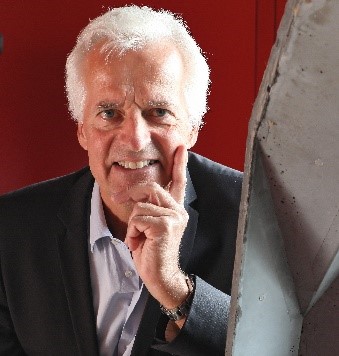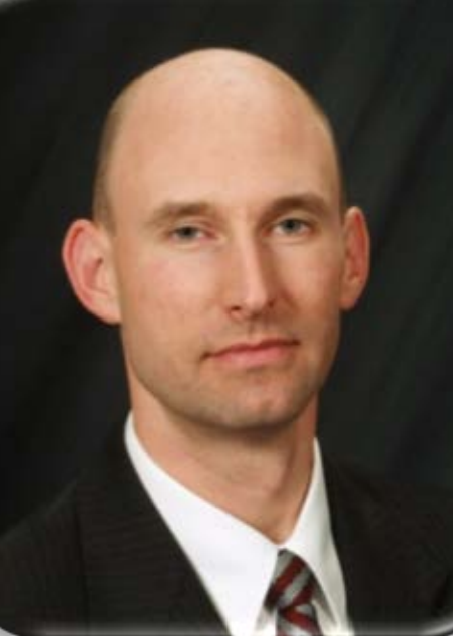Keynote Speaker: Michael Knott, PE

Presentation Title What bridge designers should know about ships colliding with bridges and how to prevent collapse.
Presentation Description: Colliding ships and barges with bridges are accidents waiting to happen and measures must be taken to ensure safety. In this keynote talk, Mike will provide historical examples of major cases involving large ships and barges colliding with bridges. He will also provide summary of available methods and guidelines on how to protect bridges from collapsing during collision.
Bio: Michael Knott, PE, is Senior Vice President Emeritus, with Moffatt & Nichol. He is a world recognized expert on complex issues related to transportation systems, bridge design, port engineering, rail development, intermodal facilities, and heavy marine foundations. During his 47+ year career, he has developed a unique expertise on the specialized subject of ship and barge collisions with bridges and marine structures. He was the principal author of the AASHTO Guide Specification on Vessel Collision Design of Highway Bridges, 2nd Edition 2009, as well as the previous edition published in 1991. Michael Knott was a selected member of the national team of bridge experts which developed the original AASHTO LRFD Bridge Design Specifications in 1994 and assisted in the preparation of the 2009 update. He was also a selected member the team of national experts that developed the AASHTO Guide Specifications for Bridges Vulnerable to Coastal Storms, 2008 in the aftermath of the widespread destruction caused by Hurricane Katrina along the Gulf Coast states.
Keynote Speaker: Eugen Brühwiler, Prof. em. Ph.D., P.E.,
Swiss Federal Institute of Technology (EPFL) Lausanne, Switzerland

Presentation Title Current developments in Europe in rescuing existing bridges with UHPC
Presentation Description: UHPC (Ultra-High Performance Fiber Reinforced Cementitious Composite) is now readily used in Europe to salvage deteriorating existing reinforced concrete and steel-concrete composite road bridges. The main idea is to add a thin waterproof UHPC strengthening layer to a reinforced concrete member to increase its structural resistance and improve its durability. Several recent UHPC project realizations are presented together with their underlying design concepts and items of dimensioning, execution, costs and environmental impact. Finally, recently built new UHPC bridges in lightweight construction and next steps in using UHPC for durable and sustainable road infrastructure will be highlighted.
Bio: Eugen Brühwiler is an Honorary Professor of structural engineering at EPFL – the Swiss Federal Institute of Technology in Lausanne Switzerland. His activities include modern methods of fatigue and safety assessment of existing bridges using data from monitoring as well as the use of UHPC for the rehabilitation and strengthening of bridges and the design of new bridges. As a consulting engineer, he is involved in numerous UHPC projects, mostly related to bridges and buildings, in Switzerland and abroad.
Keynote Speaker: Changsu Shim, PhD, Professor, Department of Civil,
Environmental Engineering and Urban Design, Chung-Ang University

Presentation Title Digitalized highway bridge construction using smart technologies in Korea
Presentation Description: When a country faces a shortage of skilled labor in the construction industry, the development of prefabricated construction becomes essential. Prefabricated construction can also incorporate automated machinery and advanced technologies, further reducing the need for extensive manual labor. In this presentation, a national program on smart construction will be introduced. This initiative champions the adoption of digital, model-based design practices tailored for prefabricated components, ensuring seamless automated fabrication and pre-assembly processes, as evidenced in several highway construction projects in Korea. Central to the program is the establishment of an automated fabrication facility, complemented by sophisticated digital geometry inspection technologies. The pilot deployment of these smart technologies has yielded valuable insights and recommendations for enhancing Design for Manufacturing and Assembly (DfMA) methodologies, marking a significant leap forward in the realm of prefabricated bridge construction.
Bio: Dr. Shim is a Professor at Chung-Ang University, Seoul, specializing in Civil and Environmental Engineering and Urban Design. He focuses on Building Information Modeling (BIM) for bridge design, construction, and maintenance, along with digital twin technology and 3D concrete printing. As President of the Korean Institute of BIM and Vice President of the Korean Society of Steel Construction, Dr. Shim has significantly contributed to the field and has played a key role in shaping Korean design codes. He has innovated in the field of bridge construction by developing a range of modular components, including comprehensive precast deck systems, prestressed concrete girders, and precast prestressed concrete piers. He is advancing the application of digital models in Design for Manufacturing and Assembly (DfMA) specifically tailored for bridge projects. Currently, he leads a national research program on smart construction technologies, emphasizing digital models for prefabricated bridges.
Keynote Speaker: Benjamin A. Graybeal, Ph.D, P.E.,
U.S. Federal Highway Administration

Presentation Title Solutions that Move the Needle
Presentation Description: Bridges and the bridge engineering sector are at an inflection point. On one hand, highway infrastructure from the the post-WWII construction boom is in need of a refresh; on the other hand, we have new structural materials, new design and construction tools, and new insights into bridge performance. His remarks will focus on opportunities to build on our past successes while leaning into the solutions of today and tomorrow.
Bio: Benjamin Graybeal is the team leader for Bridge Engineering Research in the FHWA Office of Infrastructure Research. His Bachelor’s and Master’s degrees are from Lehigh Univeristy, his Ph.D is from the University of Maryland, and his P.E. is from Virginia. His expertise includes bridge engineering, structural concrete, concrete materials, and forensic investigations. He has 25 years’ worth of experience developing and delivering research-based solutions to challenges in the bridge sector.
Keynote Speaker: Mark A. Finlayson, PhD, Florida International University

Presentation Title What is Artificial Intelligence, and Why Should Bridge Engineers Care?
Presentation Description: Artificial Intelligence (AI) has taken the world by storm. But many remain confused and concerned: What is Artificial Intelligence really? Where did it come from? How can we use it? Is it going to take our jobs? And is it going to take over the world, Terminator-style? In this talk, I cut through the hype to provide a high-level overview of AI—it’s purpose, origin, history, and potential future—and outline productive ways to think about how we can productively use AI for our benefit, both broadly across society and specifically in Bridge Engineering. I examine the latest AI generative text and image models (e.g., ChatGPT), describing how they work and suggesting opportunities for how they might be leveraged by Bridge Engineers, all the while pointing out important caveats and limitations. We will leave time for questions and discussion.
Bio: Dr. Mark A. Finlayson is Eminent Scholar Chaired Associate Professor of Computer Science in the Knight Foundation School of Computing and Information Sciences (KFSCIS) at Florida International University (FIU). His research intersects natural language processing, artificial intelligence, cognitive science, computational linguistics, and the digital humanities. He received his Ph.D. from MIT in computer science in 2012 under the supervision of Patrick H. Winston. He also holds the M.S. in Electrical Engineering from MIT (2001) and B.S. in Electrical Engineering from the University of Michigan, Ann Arbor (1998). Finlayson is a recipient of an NSF CAREER Award (2018), an IBM Faculty Award (2019), and a DARPA Young Faculty Award (2021). His work has been funded by NSF, NIH, ONR, DARPA, DHS, DOT, MITRE, and IBM.
Keynote Speaker: Atorod Azizinamini, PhD, PE, Florida International University

Presentation Title: 3D printing with concrete
Presentation Description: 3D printing or additive manufacturing is here and is being accepted by construction industry at a very fast pace. The economy of 3D printing is bound to assist in its widespread use. While layer by layer 3D printing is dominant form, nevertheless other innovative 3D printing techniques are recently developed. Durability and long-term performance of 3D printed structural elements are essential. This presentation will provide state of practice in 3D printing and latest technologies and equipment that can be utilized to successfully construct bridge structural elements and system. Examples of successful application will be provided.
Bio: Dr. Atorod Azizinamini, P.E., is Director of Infrastructure Research and Innovation at Florida International University and Vasant Surti Professor of Civil Engineering. He is also Director of IBT/ABC-UTC at FIU.
His research areas focus on development of innovative solutions to address challenges facing nation’s bridges and leading the development of innovative technologies, capable of advancing the bridge engineering. He has developed several bridge engineering products and systems. He has received number of awards that includes 2015 White House Champion of Change: Transportation Innovator award. He is currently leading an effort to develop the first and most comprehensive Accelerated Bridge Construction Handbook.

